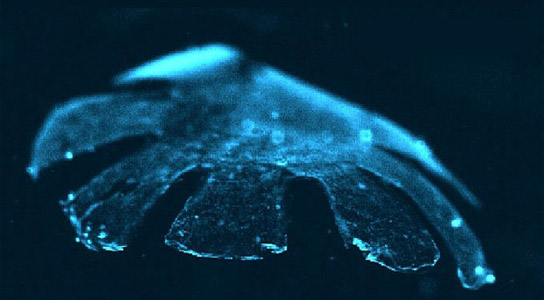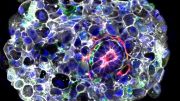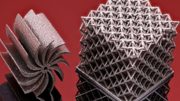
A synthetic material capable of self-propulsion using cellular building blocks. Credit: Harvard University and Caltech
Researchers have developed a lab-made material that can move itself using the building blocks found inside cells.
The scientists published their findings in the journal Nature. They started by making a gel containing microtubules, which are stiff polymer filaments that act as guiding tracks for kinesin inside cells. Kinesin is propelled along the microtubule cables by ATP.
They added a small polymer to the mix to encourage the microtubules to form bundles and create a moving network. Water droplets containing this gel moved continuously in oil emulsion and on flat surfaces, without the use of any external force.
Each ATP molecule propels kinesin 8 nanometers forward along the track. A droplet that is 100 micrometers across can start spontaneously rolling when it touches a flat surface, thanks to the thousands of kinesins moving around inside of it along multiple microtubules.
“It’s a startling advance because of the macro-scale movement that it produces,” says Raymond Goldstein, a biological physicist at the University of Cambridge, UK.
The videos record the cyclic stages through which the microtubule bundles grow, bend, buckle, break, and grow again. The fluid’s movement increased with increasing concentrations of ATP.
Theoretical physicists and biochemists who study active fluids are intrigued by the creation of a comparatively simple, real-life system that tests the theories that are usually confined to simulations.
Self-propelled polymers:
Powered by ATP, the biological motor protein kinesin makes microtubles move around and aggregate into bundles. Credit: Sanchez et al., Nature
Ramping up the speed:
Adding more ATP fuel to the mixture makes the microtubules jitter faster.
Reference: “Spontaneous motion in hierarchically assembled active matter” by Tim Sanchez, Daniel T. N. Chen, Stephen J. DeCamp, Michael Heymann and Zvonimir Dogic, 7 November 2012, Nature.
DOI: 10.1038/nature11591









can this withstand high voltage gradients like chirals i’m trying to develop a new type nano transmission, any information would be much appriciated,. thanks ian.